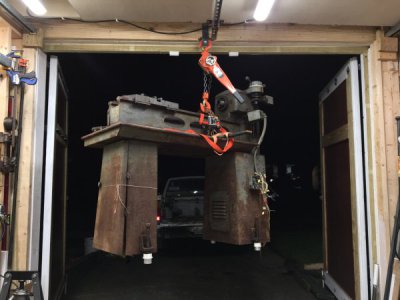This is the OP. I agree that the equipment mover should have lifted it the correct way, but at the same time, the blanket statement that the machine is ruined isn't valid either. The weight, how much of the lifting strap was on the headstock versus the spindle, and how heavy duty the spindle shaft is are all unknowns. Will the spindle deflect to some degree, yes, but the question is, will it spring back. All we know for sure is that it was a unnecessary risk of unknown magnetude. Guess I'll find out when a test piece is put in place, but even then, if there's an issue, it'll never be known whether or not it was already there.
Regardless, I agree that "next time", the mover won't be allowed to cut corners.


